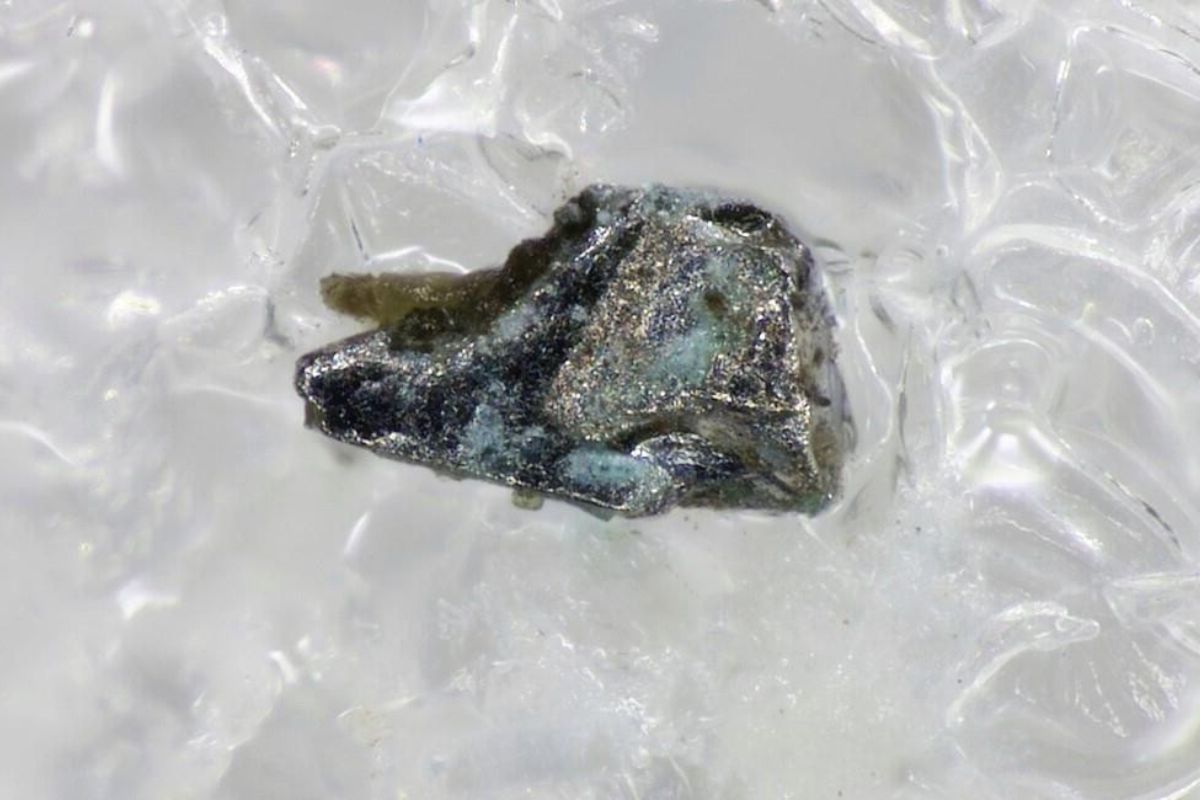
Xingzhongite is a rare mineral that has piqued the curiosity of many enthusiasts and geologists alike. Found primarily in China, this mineral boasts a unique composition that sets it apart from more common minerals. What makes Xingzhongite so special? For starters, it contains a mix of elements like copper, iron, and sulfur, which contribute to its distinct properties. Its striking appearance, often showcasing a metallic luster, makes it a fascinating subject for study. Whether you're a budding geologist or just someone intrigued by the wonders of nature, learning about Xingzhongite offers a glimpse into the Earth's hidden treasures. Ready to dive into 25 intriguing facts about this captivating mineral? Let's get started!
Key Takeaways:
- Xingzhongite is a rare mineral found in China, composed of copper, iron, and sulfur. Its unique properties make it a sought-after specimen for mineral collectors and a valuable indicator mineral in the search for copper deposits.
- With a brassy yellow to golden brown color and a metallic luster, Xingzhongite is visually striking. It has potential applications in the study of hydrothermal processes and is valued for its rarity and unique appearance.
What is Xingzhongite?
Xingzhongite is a rare mineral that has captured the interest of geologists and mineral enthusiasts alike. Found in specific locations, it holds unique properties and a fascinating history.
- Xingzhongite was first discovered in China, specifically in the Xingzhong region, which is how it got its name.
- This mineral is composed primarily of copper, iron, and sulfur.
- It forms in hydrothermal veins, which are cracks in rocks filled with hot, mineral-rich water.
- Xingzhongite is often associated with other minerals like chalcopyrite and pyrite.
- It has a metallic luster, making it visually striking.
Physical Properties of Xingzhongite
Understanding the physical properties of Xingzhongite can help identify it in the field and appreciate its uniqueness.
- Xingzhongite has a hardness of 3.5 on the Mohs scale, making it relatively soft.
- Its color ranges from brassy yellow to golden brown.
- The mineral has a specific gravity of about 4.2, indicating it is denser than many common minerals.
- Xingzhongite exhibits a cubic crystal system, meaning its crystals form in a symmetrical, cube-like shape.
- It has a streak color of black, which is the color of the powder left behind when it is scratched on a surface.
Chemical Composition of Xingzhongite
The chemical makeup of Xingzhongite is what sets it apart from other minerals.
- Xingzhongite is primarily composed of CuFeS2, a combination of copper, iron, and sulfur.
- Trace amounts of other elements like zinc and silver can sometimes be found in Xingzhongite.
- The presence of copper gives it its distinctive color and metallic luster.
- Xingzhongite can undergo oxidation, leading to the formation of secondary minerals like malachite and azurite.
- It is often studied for its potential use in copper extraction.
Where is Xingzhongite Found?
The geographical distribution of Xingzhongite is limited but intriguing.
- Xingzhongite is primarily found in the Xingzhong region of China.
- Smaller deposits have been reported in other parts of Asia, including Japan and Korea.
- It is typically found in areas with significant hydrothermal activity.
- Xingzhongite is often located in mining regions known for other copper and iron sulfide minerals.
- Its rarity makes it a sought-after specimen for mineral collectors.
Uses and Applications of Xingzhongite
While not widely used, Xingzhongite has some interesting applications.
- Xingzhongite is primarily of interest to mineralogists and geologists for research purposes.
- It can be used as an indicator mineral in the search for copper deposits.
- Some collectors value Xingzhongite for its unique appearance and rarity.
- It has potential applications in the study of hydrothermal processes.
- Xingzhongite may also be used in educational settings to teach about mineral formation and properties.
Final Thoughts on Xingzhongite
Xingzhongite, a rare mineral, holds a unique place in the world of geology. Found primarily in China, it’s a fascinating blend of elements like copper, iron, and sulfur. Its striking metallic luster and complex crystal structure make it a subject of interest for scientists and collectors alike. Despite its rarity, Xingzhongite offers valuable insights into the geological processes that shape our planet. Whether you're a seasoned geologist or just someone curious about the natural world, learning about this mineral can be incredibly rewarding. It’s a reminder of the endless wonders hidden beneath the Earth's surface. So next time you hear about rare minerals, remember Xingzhongite and its unique contribution to our understanding of geology. Keep exploring, stay curious, and who knows what other hidden gems you might uncover!
Frequently Asked Questions
Was this page helpful?
Our commitment to delivering trustworthy and engaging content is at the heart of what we do. Each fact on our site is contributed by real users like you, bringing a wealth of diverse insights and information. To ensure the highest standards of accuracy and reliability, our dedicated editors meticulously review each submission. This process guarantees that the facts we share are not only fascinating but also credible. Trust in our commitment to quality and authenticity as you explore and learn with us.
